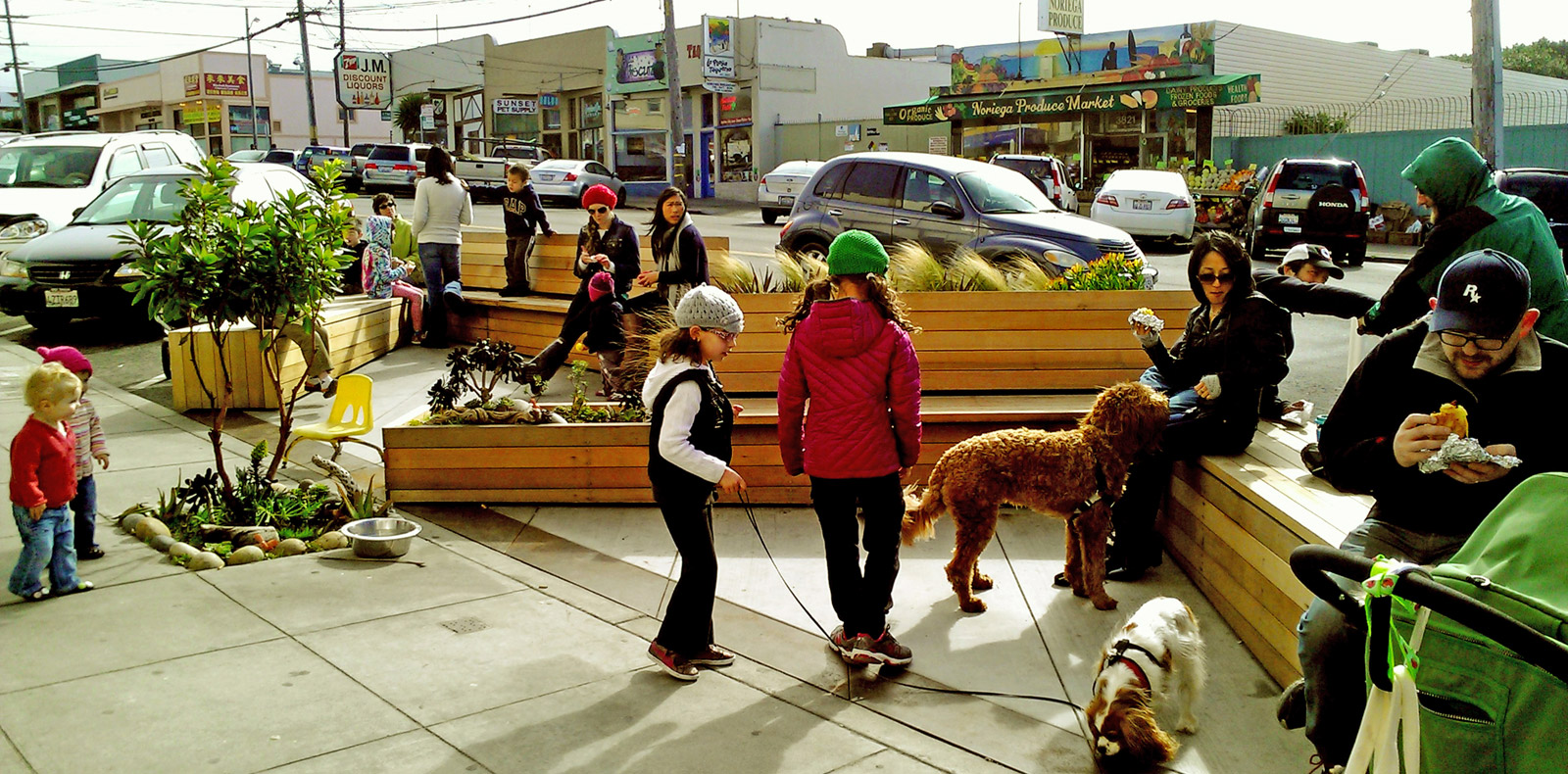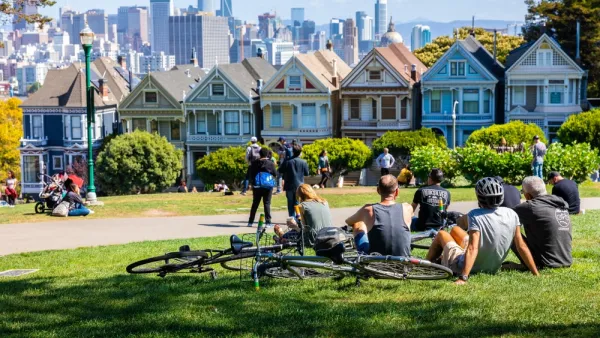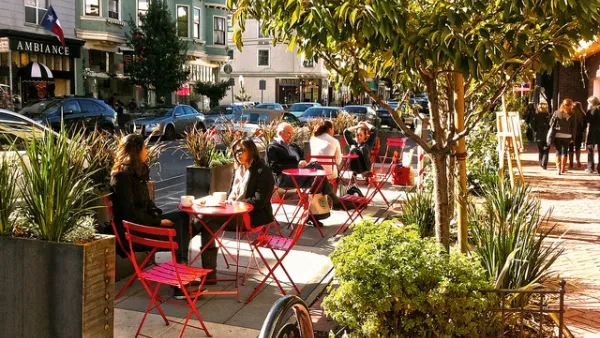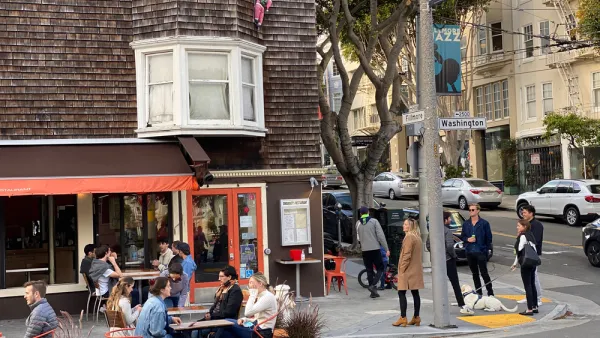The San Francisco Chronicle's urban design critic, John King, knows his San Francisco parklets—from the first ones that started the nationwide urban movement five years ago, to the ones currently in the hopper at the city planning office.
Take a photographic tour of San Francisco's parklets in the Mission District, North Beach, and the Outer Sunset, to name a few locations of this San Francisco invention that is now recognized as a legitimate use of parking space, though they have their critics complaining about the loss of parking space.

credit: San Francisco Pavement to Parks Program
John King has been covering them since their inception—two of his past articles can be accessed under "Related" below.
"The best parklets combine design ambition with a genuine desire to engage passersby," he writes. "Others are no more than glorified sidewalk seating for the businesses that install and maintain them. They are, in short, as varied and problematic as the city in which they were born."
“They’re important when they’re seen as representing our right as citizens to shape our environment and prod cities to do better,” said Blaine Merker of Gehl Studio [who was involved in the creation of parklets five years ago.]
Not all parklets were a success. King notes that one "was removed in 2013 because of the raucous users it attracted overnight" as did Planetizen, based on a San Francisco Examiner the same year aptly titled, "S.F.'s parklets program learns from failure, moves ahead."
Want more information on the city's parklet program? A good contact would be Robin Abad Ocubillo of the Pavement to Parks Program.
I’m biased — I love all of them,” said Robin Abad Ocubillo, who oversees the parklets program for the city’s Planning Department. “I can think of very few spaces where they’re doing a poor job. ... Exquisite design isn’t always what we need.”
About Pavement to Parks: "San Francisco's streets and public rights-of-way make up 25% of the city's land area; more space than all the public parks combined. Many of our streets are excessively wide and contain large underutilized areas, especially at intersections. San Francisco's 'Pavement to Parks' program seeks to test the possibilities of these underused areas of land by quickly and inexpensively converting them into new pedestrian spaces."
Hat tip: John Holtzclaw, Sierra Club Transportation Program
FULL STORY: How S.F.’s parklet movement has grown across globe [subscription may be required]

National Parks Layoffs Will Cause Communities to Lose Billions
Thousands of essential park workers were laid off this week, just before the busy spring break season.

Retro-silient?: America’s First “Eco-burb,” The Woodlands Turns 50
A master-planned community north of Houston offers lessons on green infrastructure and resilient design, but falls short of its founder’s lofty affordability and walkability goals.

Delivering for America Plan Will Downgrade Mail Service in at Least 49.5 Percent of Zip Codes
Republican and Democrat lawmakers criticize the plan for its disproportionate negative impact on rural communities.

Test News Post 1
This is a summary

Test News Headline 46
Test for the image on the front page.

Balancing Bombs and Butterflies: How the National Guard Protects a Rare Species
The National Guard at Fort Indiantown Gap uses GIS technology and land management strategies to balance military training with conservation efforts, ensuring the survival of the rare eastern regal fritillary butterfly.
Urban Design for Planners 1: Software Tools
This six-course series explores essential urban design concepts using open source software and equips planners with the tools they need to participate fully in the urban design process.
Planning for Universal Design
Learn the tools for implementing Universal Design in planning regulations.
EMC Planning Group, Inc.
Planetizen
Planetizen
Mpact (formerly Rail~Volution)
Great Falls Development Authority, Inc.
HUDs Office of Policy Development and Research
NYU Wagner Graduate School of Public Service





























